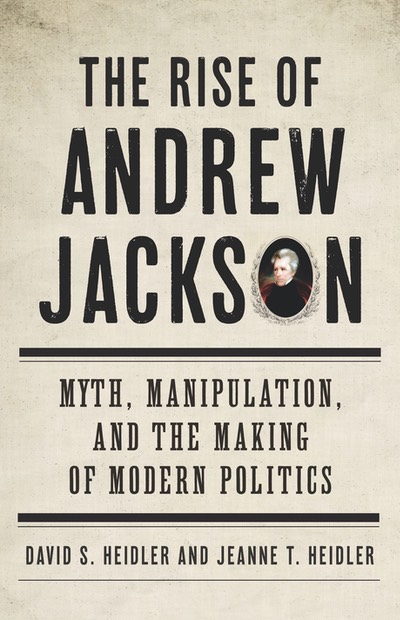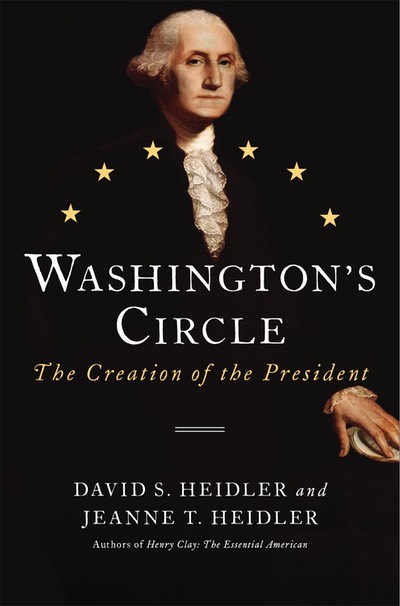His impervious moral center
came with weighty baggage.
In 1991, English playwright Allan Bennett told the story of King George III in a theatrical work that pondered the political implications of having a mad monarch sniped at by opponents in Parliament and undermined by a spiteful, rebellious son. The Madness of George III was an art-house piece crafted for a knowledgable audience, but Hollywood saw potential in it as a costume drama that, with some changes, could find an audience in the States. Perhaps it’s true that changing the title to The Madness of King George was to avoid confusing American moviegoers that they were buying tickets to the second sequel in the “Mad George” franchise. But setting aside the possibility that the tale of the title is a snide exaggeration of American provincialism, steering the story’s focus away from political drama to domestic melodrama was a bid to widen the movie’s appeal.
The movie was popular in 1994, but it remains difficult to watch for reasons beyond the cringe-inducing reduction of a proud man to a pathetic, mewling bag of appetites. By making him exclusively into that creature, the story recalls a proud man most imperfectly. To be sure, George III is remembered mostly for his failures, especially for losing his American colonies in North America, and for losing his mind. Yet, most of us would agree that it is unfair to measure a man when he is not himself just as it’s unjust to weigh his worth by focusing on his flops. His death on January 29, 1820, came after a ten-year decline during which he became blind, bedridden, crippled, and incoherent. That long, sad good-bye encouraged historians to assess his reign by remembering its principal catastrophe while coming to some remarkable and ever-changing conclusions about his health.
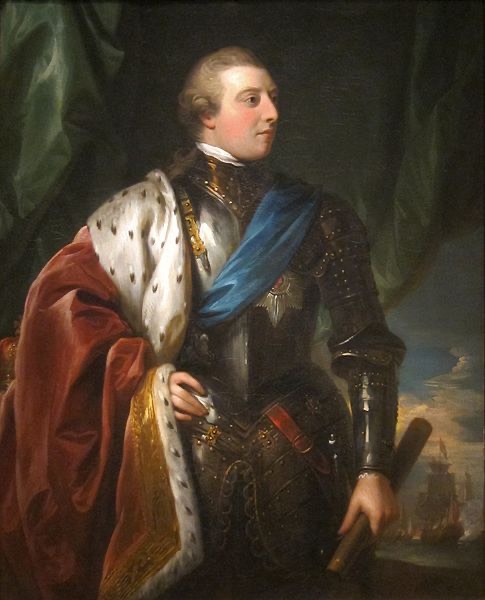
The catastrophe was the American Revolution that ended with Britain losing the crown jewel of its empire, the thirteen North American colonies that had united to oppose the king and Parliament with armed rebellion. George was a young man in his twenties when “the American Problem” first arose, but he seemed to make the problem worse with bad decisions and coercive policies. Edmund Burke ominously warned members of Parliament aligned with the king on the American question, “A great empire and little minds go ill together.” After the war, the British political establishment accordingly laid the disaster at the king’s feet. Eventually, historians of his reign would go one better. They claimed his head was responsible for the mess. The king’s mind had not just been “little,” they said. It had been deranged.
Insanity was a strange judgment to settle on King George III. Never was there a man with a life more orderly or predictable. Stable and stodgy would have described him from the time he was but a wee lad. He became king in 1760 when only twenty-two, but George was one of those people born “old.” A cloistered childhood spent almost exclusively in the company of adults, especially his doting and demanding mother and her close friends, made him serious, shy, and supremely conscientious.
George III avoided excess in all things, kept himself trim, fit, and sober, and acted as if being king was simply a job with extraordinarily burdensome duties. He rose early, sat down to his desk before many of his ministers were awake, and read documents and dispatches with nearly religious diligence. Indeed, he often worked beyond the endurance of his cabinet. Rather than resign himself to his arranged and obligatory marriage to Charlotte of Mecklenburg, he embraced her as both friend and lover. They had fifteen children, and George never had a mistress, possibly because he didn’t have the time. The decorous restraint that was entirely in character for him was a rarity in European royal houses.
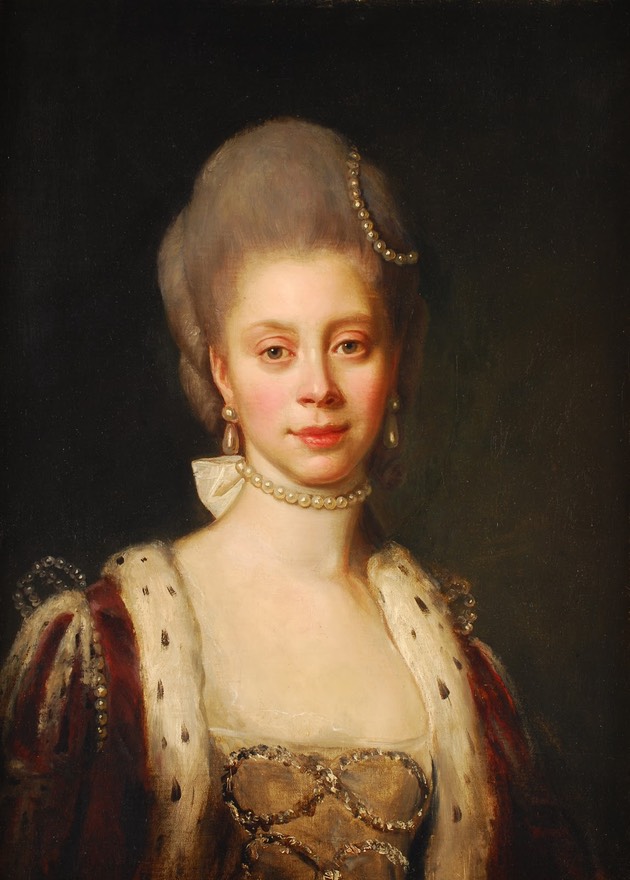
Queen Charlotte
His domestic virtues mirrored his intellectual discipline. He collected books with such enthusiasm that his personal library came to number 65,000 volumes, included almost 500 manuscripts, and became the core of the British museum’s national library. He cultivated the arts as well as patronized them, relished the work of his favorite composer (Handel), and loved opera’s lyricism as much as its pageantry. He promoted the sciences, especially astronomy, granting the celebrated William Herschel a generous pension and picking up the tab for his enormous telescopes.
When George III wasn’t watching the heavens from his own observatory at Kew, he was watching the ground to track the progress of his experiments in horticulture and husbandry, a pastime that earned him the affectionate nickname “Farmer George” among common folk. True enough, Farmer George preferred the fragrance of earth mixed with manure over the pretensions of perfumed posers at Court. Meeting a physician who had begun his career as a clergyman, George was puzzled by the career change. The doctor reminded the king that Christ had been a healer. “Not for £700 a year,” George flatly observed.
We can only imagine the devastating blow dealt this man by the outcome of the Revolutionary War in America, but grinding and chronic workaday concerns were just as wearing. Scheming politicians plotted against him, often doing so in league with his rebellious son, the Prince of Wales, whose mode of living made a mockery of the king’s sobriety. When the prince wasn’t conspiring against his father, he drank and whored with such careless abandon that even the king’s opponents despaired of the day the lad would wear the crown.
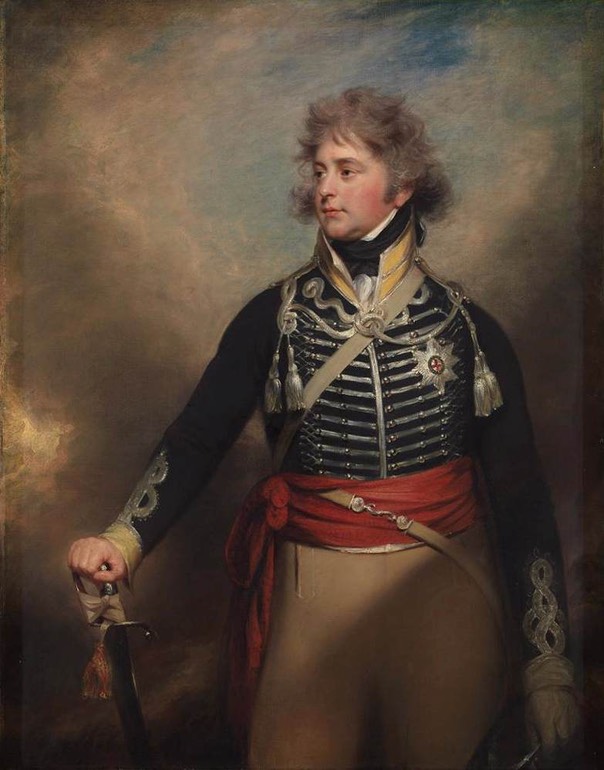
HRH, The Prince of Wales
George weathered blows, surmounted obstacles, bore up under hardship, and dismissed disappointments, but he never surrendered to any of them. The trait was most admirable, but it defined the core of George III’s character and thus could be seen as a cardinal flaw. His moral center was unshakeable — losing America could not crack him for long, nor could losing his mind break him forever. The impervious moral center, however, came with weighty baggage. George III was often self-righteous in his certainty. Almost nobody found this appealing, and critics regarded it as downright repellant. Perseverance in George easily transformed into mulish obstinacy.
Perhaps that is why, after his death, chronicles of his reign came up with an extraordinary answer to the question of why he apparently went stark raving mad on at least four occasions, and by some counts five. Equally as baffling were his abrupt recoveries and complete return to lucidity followed by years of perfect health, until the pattern repeated itself.
The 1788 episode set what became an all too familiar sequence of events. After suffering a bout of mixed health in late summer, the king began behaving oddly in late October. Typically reserved in public, he started babbling at a social event. His rant at first puzzled and then terrified the company who marveled at the king’s deluge of words streaming between ribald comments and petulant observations. Hurried away by retainers, he only got worse behind closed doors and stayed that way for weeks. Manic explosions of energy gave way to dark depressions. He suspected everyone from the queen to his doctors, seven of them over a succession of weeks, of trying to kill him as he ran rampant, tried to force himself on a lady of the Court, and hallucinated about a flood of biblical proportions putting London entirely underwater. After every physician in attendance proved ineffectual, the very doctor that George had insulted for having been a man of the cloth, Dr. Francis Willis, took control of the case if only because he had once operated an asylum for the insane.
Willis was more humane in his treatment of “lunatics” than was the norm for the day when conduct toward the mentally ill was usually vicious and, at best, indifferent. But the relative compassion of Dr. Willis was “relative” in every sense of the word. The good doctor’s strange regimen featured dreadful indignities and borderline cruelties. Willis resorted to restraints almost immediately, but he inexplicably allowed the king to have a razor to shave himself. Overall, Willis abandoned every semblance of royal protocol and basic respect shown the king, binding him to chairs and subjecting him to pointless exercises to break his will the way one would try to tame a wild animal. When other doctors objected and tried to intervene, Willis discharged them from the case.
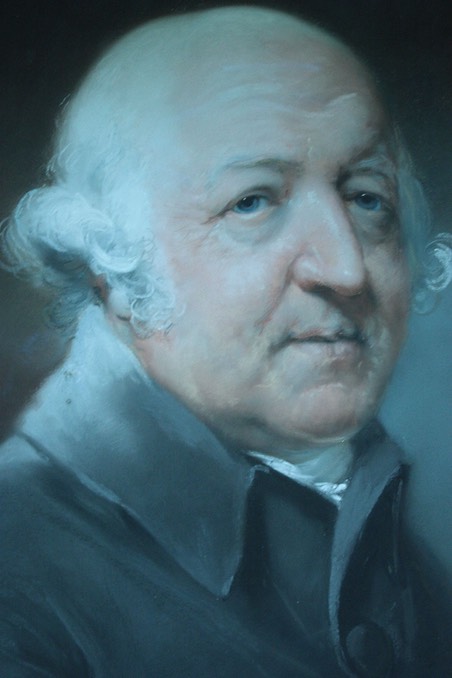
Dr. Francis Willis
Meanwhile, a full-blown emergency ensued as Parliament wrestled with a headless state. Was the king sick enough to warrant having someone assume his duties? The Regency Crisis of 1788 distilled to that question and gave the Prince of Wales and his allies the opportunity to lock up the king, throw away the key, and put the son in the father’s place, possibly forever. As machinations moved the government toward that dire solution, King George awakened one morning and indignantly asked why he was tied up. Just as rapidly as his mind had spun out of control, it suddenly righted itself to allow him to end Britain’s political crisis and mystify, presumably forever, the medical profession. If anything, the mystery intensified when the king’s strange malady repeated itself in 1801, 1804, and finally in 1810, the last, long affliction.
Despite the opportunity to study the illnesses of King George III closely and repeatedly, nobody could definitively determine what was wrong with him, and nobody ever has since. Strangely, the doctors of his time thought that some physical ailment caused his mental disorder, while historians after his death concluded he was inclined to madness in general and just occasionally went full-bore bonkers. The latter view became prevalent for most of the 19th and 20th centuries, and in 1942, a New York psychiatrist seemed to seal it with science. Dr. Manfred Guttmacher analyzed the king from a distance of more than 160 years to conclude that George III was a manic-depressive susceptible to psychotic episodes when personal and political strains overwhelmed him.
For a generation, Guttmacher’s clinical window dressing so impressed historical scholarship that almost everyone in its aftermath considered the case closed — at least, until the late 1960s when a couple of British psychiatrists came up with an alternative explanation. Ida Macalpine and her son Richard Hunter argued that George III wasn’t crazy at all. Instead, he had been afflicted with a hereditary illness of the nervous system that made him occasionally act mad. The sickness was called porphyria and had not been clinically defined until the 1930s, but it seemed to fill some troubling holes in the Guttmacher analysis.
For example, manic-depressive George was supposed to snap under pressure. But the strain of the American Revolution did not trouble his health, let alone his sanity, in the least. His first episode of “madness” was in 1788, a period of relative calm, when the king exhibited some of the preliminary symptoms of porphyria such as stomach distress before apparently losing his mind. Historians found this theory more than plausible, but medical specialists, including those most familiar with porphyria, quickly pointed out that it is a skin disorder that causes extreme sensitivity to sunlight and very rarely, if ever, has caused mental derangement.
Nevertheless, Allan Bennett’s 1991 play has an epilogue in which an actress portrays Dr. Macalpine explaining that the king was a victim of porphyria. Three years later, the movie The Madness of King George placed the porphyria explanation in its closing credits, doubtless establishing it for audiences as factual, or at least the latest truth for someone little understood as a king and imperfectly remembered as a man.
George III had the misfortune to live in a turbulent time in which monarchy was being redefined within constitutional limitations, a testament to democratic impulses that George didn’t fully understand but definitely did not like. He managed to cope and, in his way, eased the transition to ministerial and parliamentary government. He certainly was better at it than almost all of his cousins on the continent. Some, like the Romanovs in Russia, would pay dearly for their failures.
For George, his failures weren’t insignificant, but they shouldn’t be taken as the whole truth of his life. The one unshakeable certainty about the last king of America is that in his finer moments, he liked to plant things and see them grow. It’s a fitting epithet.
